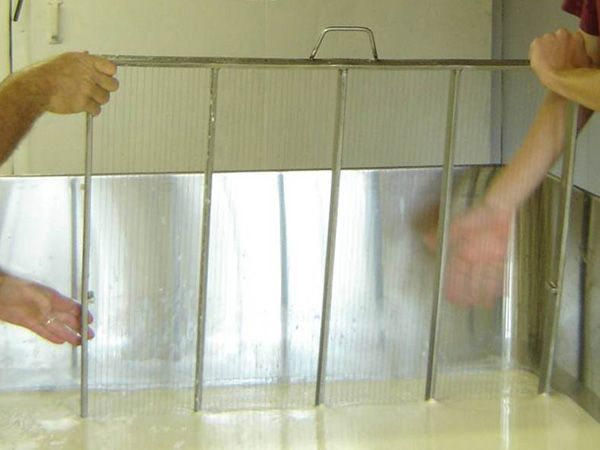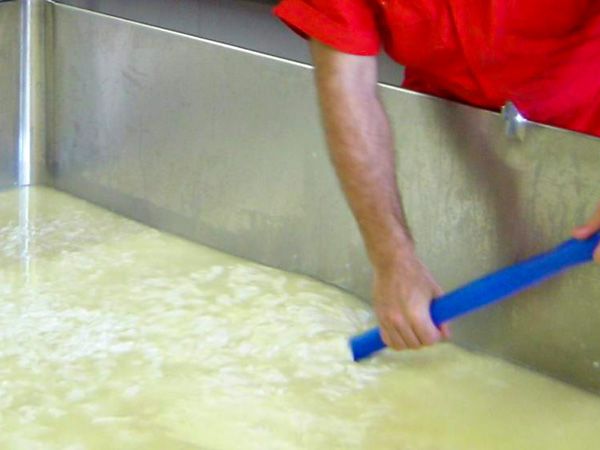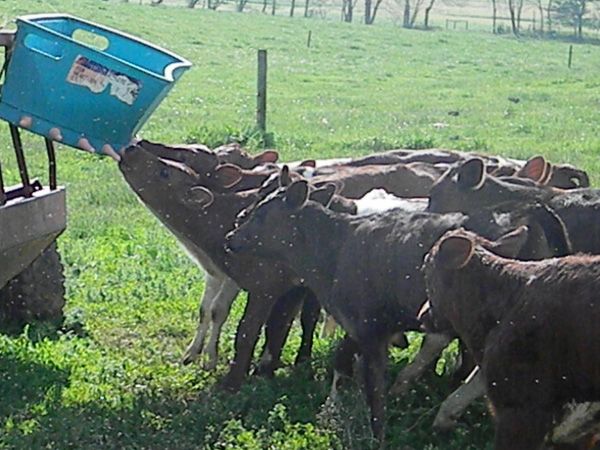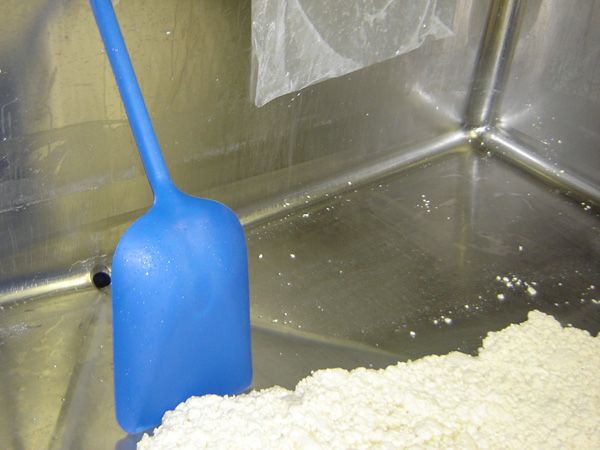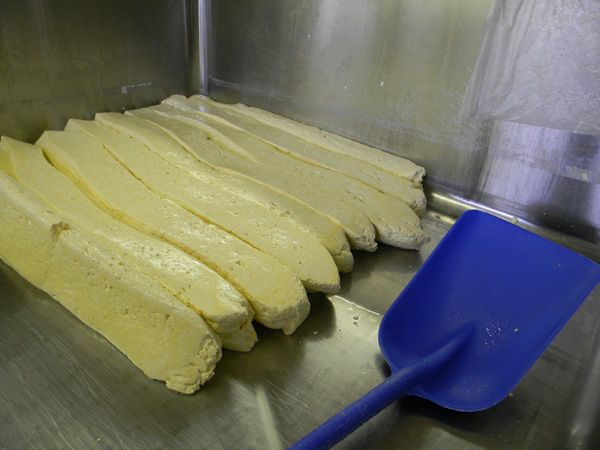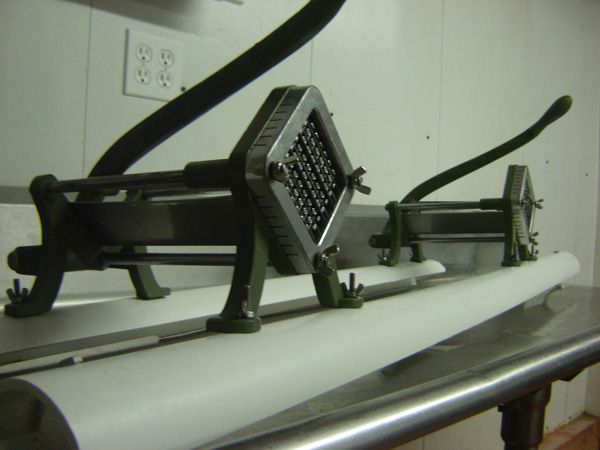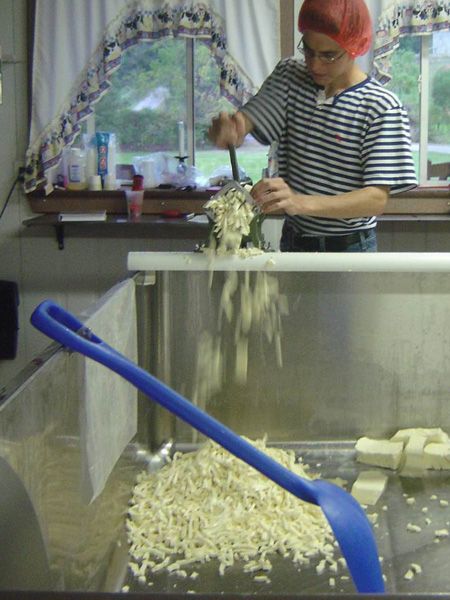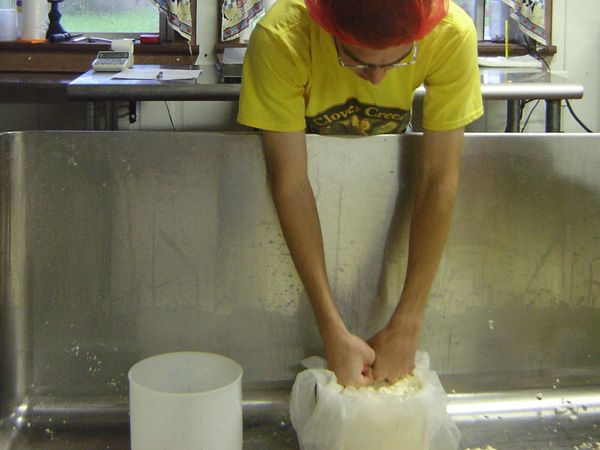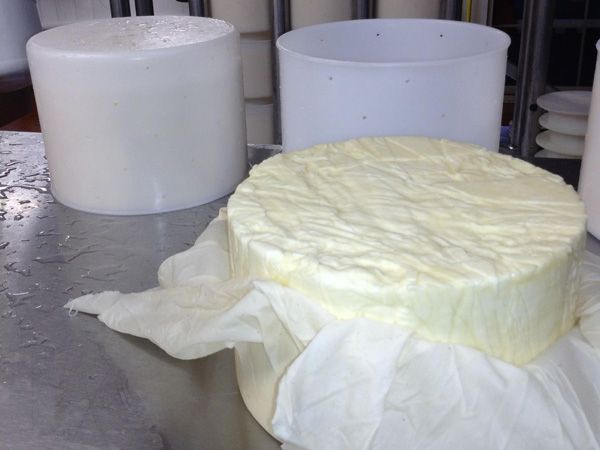Got Milk?
The best cheese is made from the highest quality milk. I will start with our cows. We have a large variety of breeds of cattle, from Jerseys to Ayrshires to Milking Shorthorns and any kind of cross in between. Our cows are out on pasture as much as possible, getting the best nutrients to make the perfect milk for our cheese. We will milk them in the morning of the cheese making and use that milk for making cheese.
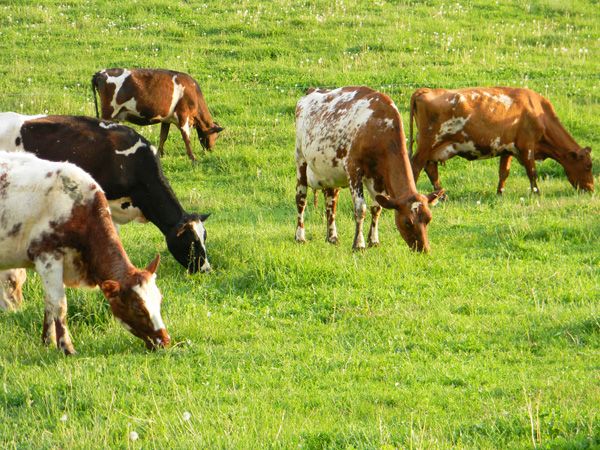
Our cheese is a raw milk cheese, meaning that there is no processing of the milk before it is used for cheese making. The milk is pumped directly from the milking parlor, through a filter and into our cheese vat. The perfect temperature for cheese making is around 90 degrees Farenheit. The cows body temperature is 101 degrees and by the time the milk travels from the parlor through stainless steel pipes, it is right around 90 degrees.
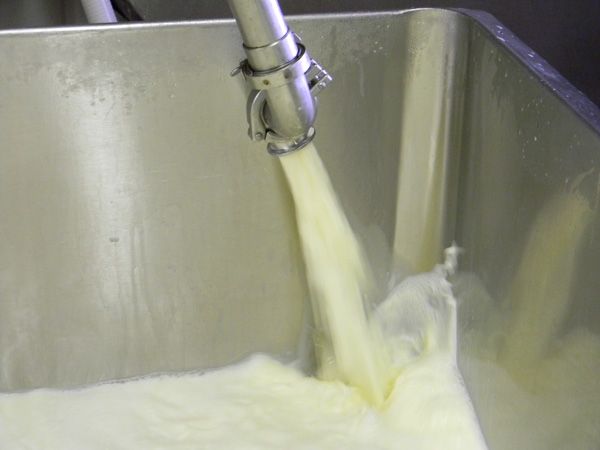
We measure the amount of milk in the cheese vat and check the pH. We use pH to tell us when the milk has reached the right stage for each step of the process. These are cheese cultures, special bacteria that turn milk into different varieties of cheese. Using the amount of milk in the vat, we calculate how much culture we should add. My dad has written up recipes for each type of cheese that we make, saying how much of each culture should be added per 1000 pounds of milk. we weigh them out on a gram scale and them sprinkle them across the milk. We stir the cultures into the milk and then wait for a half hour to an hour to allow the cultures to work before moving to the next step.

NEXT TIME: Curds and Whey
Feel free to post any questions you may have and I will try to answer them or find an answer!

Username #1: Fill in the blank: Loth______
Password #1: The Ring of Water
Username #2: Traitor to the Fellowship
Password #2: The number of books in The Lord of the Rings








